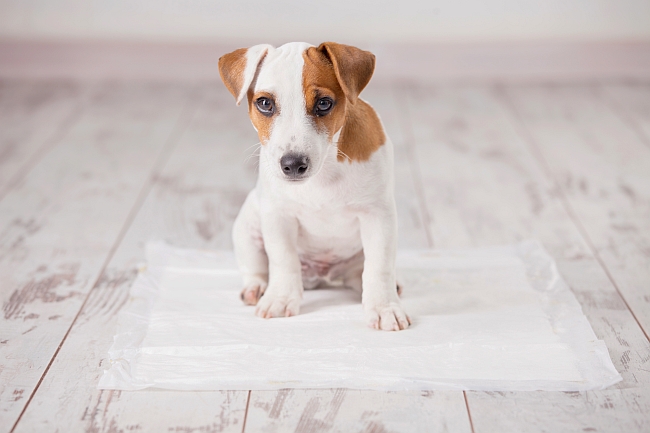
Dog training raises all kinds of questions about what kind of care the pup needs, how they cope with different challenges, and what the wisest product investments are. However, most people fail to think about what their dog would require in the way of digestive support beyond using a poop-scooper outside. Do you have a yard where he can go? Is there a park near your apartment? What do you plan on doing on mornings when the rain is pouring and your shivering pup does not want to go stomping through puddles just to find a place to do his business? Fortunately with litter boxes and potty pads there are some great products that allow dogs to eliminate safely inside. Below are the kinds of dogs and circumstances that would necessitate having an indoor potty patch option. .
What Dogs Need Indoor Elimination Options?
- Puppies in training: Puppies struggle with bladder control, and often just urinate on the floor whenever they need to go. This young age is the prime time to begin training dogs to use a potty pad.
- City dogs & Apartment dogs: When a pet owner lives on the 25th floor of a sky rise, or in the middle of a concrete jungle without a park for blocks, having a potty pad at home would be an absolute necessity for late night “bathroom” trips. These are especially helpful if the dog is young or very small and may not have enough self-control for long elevator rides or trekking on lengthy streets to their nearest grassy area.
- Dogs in cold climates: Imagine having to take your pup out to do his business in the howling wind or 4 feet of snow? Potty pads give an alternative option when the weather is bad.
- Small dogs: Not all houses that have yards are the best places for small dogs to go. They could get stuck or hurt if left in large garden menageries for too long, and would do better to have a place to do their business where it is safe inside.
- Abused or traumatized dogs: While this is not true of the majority of pets, some of them have anxiety about eliminating in a public places or taking walks at night. Having a puppy litter box on hand, or a faux turf patch would give your canine pal peace of mind.
- Sick dogs/convalescing dogs: When a dog is recovering from an injury or operation, moving around might be exceedingly painful and difficult for him. Likewise, arthritic dogs, or those with spinal or muscular limitations must find alternative options than going for long walks outside. A grass patch in the kitchen, where the dog can be carried, or can take his time moving toward would be the best solution.
- Pet owners that have a new baby: Yes there are 4 o’clock feedings that already get a new mom out of bed, but the last thing she is going to want to do is let the dog out or take him for a walk after nursing the baby.
- Incontinent dogs: As dogs age, they can have difficulty controlling their bladders, resulting in pee-pee puddles on the floor. Taking the dog outside to “go” multiple times a day (in the hopes of avoiding accidents) can become time consuming, and it still does not address the issue of nightly episodes. Helping train an incontinent dog where he can safely go inside will help minimize clean ups for you, and will lessen stress and anxiety for him.

